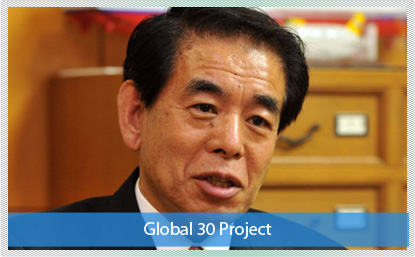We have entered an age when virtually everything is flowing across national borders
Why “internationalization” of universities?
As globalization takes root in numerous fields such as business, politics, and education we have entered an age when virtually everything is flowing across national borders.
Minister of Education, Culture, Sports, Science and Technology (MEXT) Global 30 Project is a step in that direction. The project mainly provides financial support to 13 key universities to create a university-wide environment for promoting internationalization by attracting excellent foreign students and faculty.
The total number of foreign students these 13 universities accepted in fiscal 2008, the year before Global 30 was launched, was 16,000. The number increased even after the Great East Japan Earthquake, and as of March 2013, over 28,000 foreign students and 700 foreign faculty members were enrolled at these core universities.
These numbers indicate the steady achievements of the Global 30 Project and the benefits of internationalization.

Offering impeccable and culturally sensitive English translations to Japanese universities to attract foreign students
As a part of internationalization of universities, Ulatus provided translations for following materials in English:-
Due to our stringent processes and state-of-the-art technology our output delivered to each university was flawless. We could surpass the expectations of the universities and deliver not only impeccable translations but culturally sensitive content which helped bridge the gap between Japanese universities and foreign students.
The Global 30 initiative was a huge hit in Japan, and in 5 years of its implementation Japanese universities experienced an enormous increase of 12000 foreign students and 700 foreign faculty members.